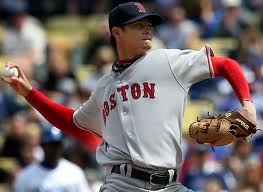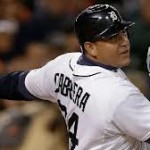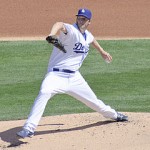
Clay Buchholz provided the best Wins/salary in the majors last year. Photo baseballrumormill.com
A few weeks back si’s Tom Verducci posted an article discussing the value of starters over closers. One of the points that he made in the article related to the general fact that Ace Starters are more likely to be with the same team that developed them than being free agent acquisitions in the modern game. In Verducci’s article, he analyzed the 20 best pitchers by ERA from last season and found that 13 of them are still with their original organization. Furthermore, 10 of them were first round draft picks.
Modern baseball teams are being built more and more through the draft. Last year’s World Series champions San Francisco featured 4 home grown starters, each of whom would slot in as the best or 2nd best pitcher on most every other rotation in the league. Tampa Bay rode a slew of home-grown (and cheap!) starters to the 2nd best record in Baseball over the past 3 years. And now we clearly see Mike Rizzo trying to build up his starting pitcher cache in the minors through mid-season trades and a focus on pitching in the past couple drafts.
I thought I’d take this point a bit further, as it relates to a topic that I have found more and more fascinating. The New York Yankees and their $200M payroll struggled to find starting pitching in the off season and are now essentially conducting tryouts in spring training for the #4 and #5 starter spots in their rotation. How did they find themselves in this predicament? The answer is thus; it has been years since they developed a home-grown Ace starter. Their best pitcher (CC Sabathia) was a (very) expensive Free Agent, their 2nd best a home grown rookie (Phil Hughes) and their third best (AJ Burnett) another pricey free agent. Arguably it has been since either Chien-Ming Wang or possibly Andy Pettitte that the Yankees have developed a starter worthy of mention. Now, the Yankees have certainly bought themselves a whole lot of offense that will mask their weaknesses in the rotation, but the fact remains that they could easily miss the playoffs in 2011 despite their payroll if the first three members of their rotation do not pitch well.
Lets look at the “Aces” in baseball, and take a look at their acquisition methods and their contract status. Here, “Home Grown” means the team that developed the pitcher, not necessarily the team that drafted him. When prospects get traded, I credit the acquiring team for developing and delivering the player to the majors.
- Home Grown: Johnson, Hamels, Wainwright, Jimenez, Lincecum, Cain, Lester, Buchholz, Price, Verlander, Liriano, Felix Hernandez, Jered Weaver.
- Free Agent Acquisition: Halladay, Lee, Carpenter, Sabathia.
- Trade Acquisition: Oswalt, Santana, Greinke.
Of these 20 “Aces,” 13 are still with their developing organization. Four Free Agent acquisitions for big money, and three traded Aces that cost their teams plenty (though in retrospect the Johan Santana trade isn’t looking that bad for the Mets).
Another side-point was Verducci’s findings that 10 of the top 20 pitchers by ERA last year were first rounders. I find that piece of information really amazing, given the notorious “crapshoot” mentality of baseball Drafts. Here’s a quick followup analysis of the Initial Acquisition method of my 20 “Aces” and determining draft or international free agent. Here, we’ll put “supplemental first rounders) into the “1st round” category.
- Draft: 1st Rounder: Hamels, Halladay, Carpenter, Wainwright, Greinke, Lincecum, Cain, Buchholz, Price, Sabathia, Verlander, Jered Weaver.
- Draft: top 5 rounds: Johnson (4th), Lee (4th), Lester (2nd).
- Draft: 6th round or later: Oswalt (23rd).
- International Free Agents: Santana, Jimenez, Liriano, Felix Hernandez.
So by my analysis, 12 of the best 20 pitchers in the game were first round picks. Only Oswalt looks like a complete diamond in the rough find. For all the talk about how the draft is a crap shoot (hey, Albert Pujols was a 13th round pick), it really seems apparent that these first rounders paid off handsomely.
Here’s one more look; of the 13 “home grown” aces, lets look at their current contract status. All data per Cot’s fantastic salary database site.
- Johnson: 4 years/$39M (2010-13)
- Hamels: 3 years/$20.5M (2009-11), but he has a 4th arbitration year in 2012.
- Wainwright: 4 years/$15M (2008-11), plus 2012, 2013 club options (this contract is in complete peril though, since the club can terminate at the end of 2011 when Wainwright is on the DL. That essentially kills $21M guaranteed to Wainwright in 2012 and 2013. Tough, tough break for the player).
- Jimenez: 4 years/$10M (2009-12), plus 2013-14 club options (the club options are very reasonable for an Ace)
- Lincecum: 2 years/$23M (2010-11), but these are just his first two arbitration years. Two more to go to take him through 2013.
- Cain: 3 years/$27.25M (2010-12)
- Lester: 5 years/$30M (2009-13), plus 2014 club option
- Buchholz: 1yr/$480K (est): Still on a pre-arbitration contract, possibly the best value in baseball right now. Controlled through 2014 by the Red Sox.
- Price: 6 years/$8.5M (2007-12). Wait, actually THIS may be the best deal in baseball, since Buchholz will probably garner a massive first-year arbitration award in 2012 just as Price’s 6 year deal ends. However, Price can void the contract and file for arbitration as soon as he becomes eligible, presumably for the 2012 season.
- Verlander: 5 years/$80M (2010-14)
- Liriano: 1 year/$4.3M (2011). Still in his arbitration years, under club control through 2012.
- Felix Hernandez: 5 years/$78M (2010-14)
- Jered Weaver: 1 year/$7.37M (2011). He lost his arbitration hearing this year after going “only” 13-12 but leading the league in strikeouts and coming in 5th in Cy Young voting. Under club control through 2012.
And, adding in the non-home grown players for a complete picture of the future Ace starter FA market:
- Halladay: 3 years/$60M (2011-13), plus 2014 option
- Lee: 5 years/$120M (2011-15), plus 2016 option
- Carpenter: 5 years/$63.5M (2007-11), plus 2012 club option
- Sabathia: 7 years/$161M (2009-15) but he can opt out after the 2011 season
- Oswalt: 5 years/$73M (2007-11), plus 2012 club option
- Santana: 6 years/$137.5M (2008-13), plus 2014 club option
- Greinke: 4 years/$38M (2009-12)
So, here’s a quick summary of when these Aces may hit the FA market:
- After 2011: Wainwright (but he’ll be post-TJ surgery), Sabathia (probably)
- After 2012: Cain, Liriano, Weaver, Oswalt, Carpenter, Greinke, Hamels
- After 2013: Johnson, Lincecum, Santana (probably)
- 2014 or Beyond : Jimenez, Lester, Buchholz, Price, Verlander, Hernandez, Halladay, Lee
Notice how teams are locking up these Ace pitchers for the long haul. We’re likely to have perhaps just an injury reclamation project in Adam Wainwright and opt-out 100% certain to return to the Yankees Sabathia as the sole major free agent candidates this coming off season. I’ve read differing opinions on whether or not Sabathia opts out of his contract (he’d be abandoning $92M of guaranteed pay over 4 years) but I’d be surprised (shocked actually) if he did NOT opt out, especially if he has a third consecutive year of similar production to his first two for the Yankees. You would have to think he could easily merit a contract north of Cliff Lee’s $24M/year for 7 additional years. 7yrs/$170M or so.
Lastly, lets look at the 8 playoff teams from last year and investigate how many of their starters were home grown:
- Giants: 4 of 5 homegrown (Lincecum, Cain, Sanchez, Bumgarner). 1 FA in Zito
- Rangers: 3 of 5 home grown (Wilson, Hunter, Feldman), 1 trade acquisition (Lee), and one FA (Lewis)
- Yankees: 1 home grown (Hughes) and 4 Free Agents (Sabathia, Burnett, Pettitte, Vazquez)
- Phillies: 1 home grown (Hamels), 3 traded acquisitions (Halladay, Oswalt, Blanton) one FA (Moyer).
- Rays: 4 home grown (Sheilds, Neiman, Price, Davis) one trade acquisition (Garza)
- Twins: 3 home grown (Baker, Blackburn, Slowey) one FA (Pavano) and one trade acquisition (Liriano).
- Braves: 3 home grown (Hanson, Jurrgens, Medlen/Minor), one FA (Lowe), one trade acquisition (Hudson)
- Reds: 3 home grown (Leake, Bailey/Wood, Cueto), two trade acquisitions (Arroyo and Harang).
Six of the Eight playoff team used rotations that were mostly home grown. Most of the trade acquisitions here were trading of prospects (either the acquiring team using prospects to acquire a proven Vet, as with Hudson, or the acquiring team acquiring and developing the player, as with Garza).
What is the lesson, after all this analysis? Draft well, develop well, and then lock down your Aces for the long haul. That is the pathway to success. There are some exceptions of course (the Phillies have acquired 2 Aces by leveraging their very good farm system depth, and still have enough lower-level depth to rank among the best farm systems in baseball. And the Yankees of course have bought themselves a good portion of their team). But looking at the playoff teams last year, most of them were draft-heavy on starters.
Coincidentally; the Nats 2011 rotation by way of comparison? 2 drafted (Lannan, Zimmermann), 2 FAs (Livan and Marquis) and one trade acquisition candidate (Gorzelanny). This would look far better of course if we were using two key drafted/developed players (Strasburg, Detwiler or even Maya).
Here’s hoping that the Nats’ higher-end starting pitcher draft picks (Strasburg, Zimmermann Solis, Cole, and Detwiler) become the core of our rotation for years to come.







